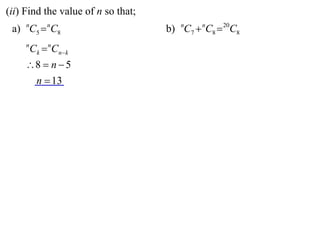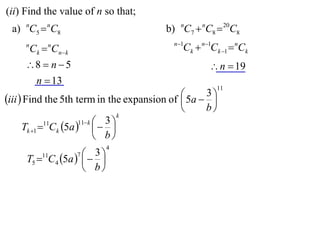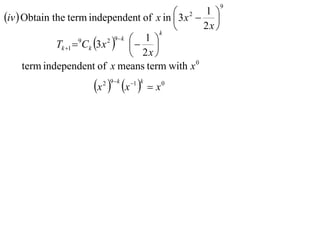The document proves a formula for calculating binomial coefficients without using Pascal's triangle. It does so through a multi-step proof by induction. First, it shows the formula holds for k=0. Then it assumes the formula holds for some value k=r, and shows it also holds for k=r+1. Therefore, by induction the formula holds for all positive integer values of k. The document also explains how this relates to the binomial theorem for expanding binomial expressions.
























































